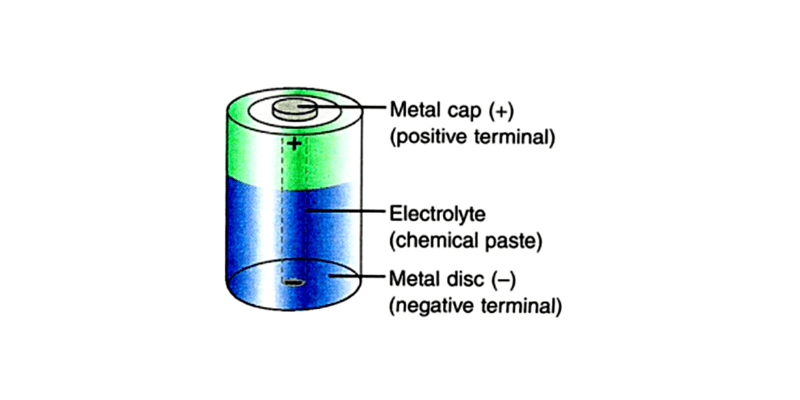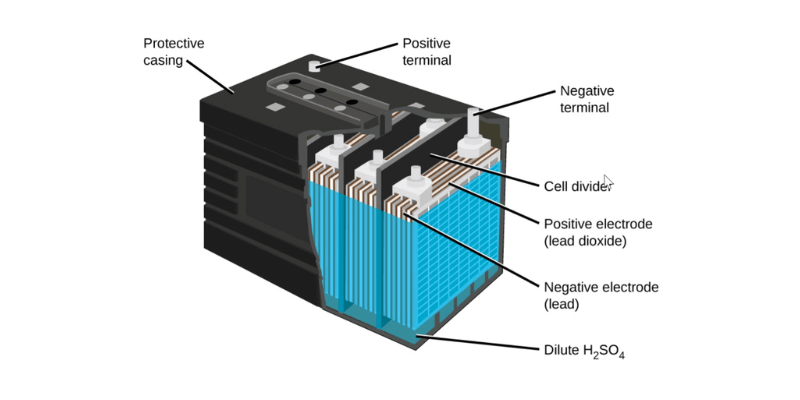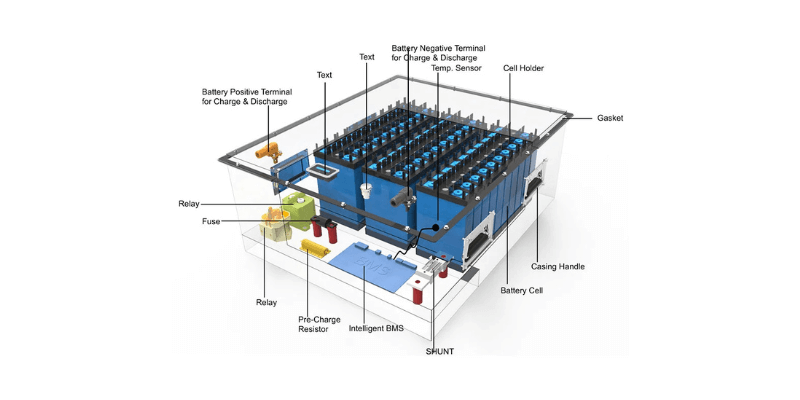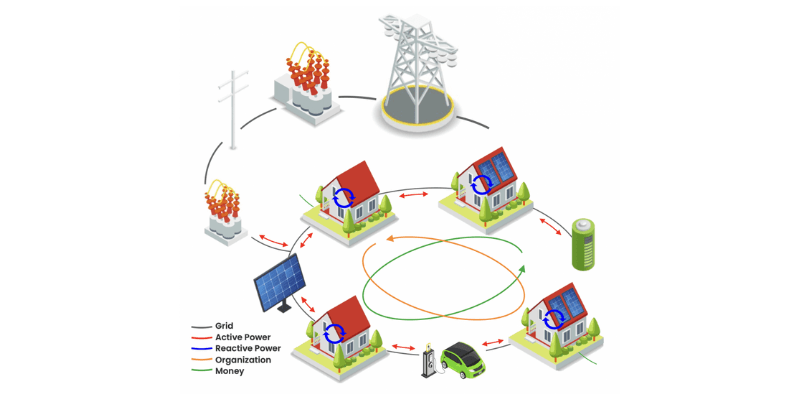Energieopslag is van vitaal belang voor het moderne leven, omdat veel bedrijven afhankelijk zijn van batterijen voor het aandrijven van gereedschap, verlichting en apparatuur op werklocaties. Wanneer er geen walstroom beschikbaar is, zorgt batterijopslag voor een consistente werking in industriële en commerciële projecten. Laten we onderzoeken hoe dit werkt.
Wat is energie & Hoe wordt het opgeslagen?
Energie is het vermogen om arbeid te verrichten en bestaat in twee hoofdvormen: kinetische en potentiële energie.
Een rollend gesteente heeft bijvoorbeeld kinetische energie door zijn beweging, terwijl een rots aan de rand van een heuvel potentiële energie heeft vanwege zijn vermogen om te rollen.
Elektrische energie wordt als kinetisch beschouwd omdat deze altijd in beweging is, maar kan worden omgezet in andere opgeslagen vormen van energie.
Op dezelfde manier vertegenwoordigt water achter een dam opgeslagen potentiële zwaartekrachtenergie.

Kun je elektrische energie opslaan?
Nee, je kunt elektriciteit niet rechtstreeks opslaan, maar het kan wel worden omgezet in opslagbare vormen. Deze energie kan later weer worden omgezet in elektriciteit. Opslagmethoden voor elektrische energie omvatten vliegwielen (mechanisch), verhoogd water of gewichten (zwaartekracht), perslucht (potentiaal), condensatoren (elektrische lading) en de meest voorkomende: batterijen (chemisch).
Wat is een batterij?
Een batterij is een opslagapparaat dat chemische energie omzet in elektrische energie. Het bevat een of meer elektrochemische cellen waar chemische reacties een stroom elektronen creëren, die de elektrische stroom leveren die nodig is om werk uit te voeren.
Batterijen functioneren als elektronenpompen, met een positieve kant (kathode), een negatieve kant (anode) en een elektrolyt dat er chemisch mee reageert.
Hoewel dit proces bij alle batterijen voorkomt, slaan verschillende typen energie op unieke manieren op.

Veel voorkomende batterijtypen & Hoe ze energie opslaan
Voor industrieel en commercieel gebruik zijn er twee hoofdtypen energieopslag op oplaadbare batterijen, die qua prestaties verschillen.
Loodzuurbatterijen
Loodzuuraccu's zijn ruim 170 jaar oud en behoren tot de oudste oplaadbare accutypen.
Elke batterij van 12 volt bestaat uit zes cellen met een mengsel van zwavelzuur en water, met een positieve pool (kathode) en een negatieve pool (anode).
Bij ontlading valt zwavelzuur uiteen in water, waarbij elektronen vrijkomen voor de opwekking van elektriciteit. De chemische reactie op de negatieve plaat is: Pb(s) + HSO−4(aq) → PbSO4(s) + H+(aq) + 2e−
Tijdens het opladen herbouwt energie de zuurmoleculen voor toekomstig gebruik.
Hoewel ze betrouwbaar zijn en veel worden gebruikt, hebben loodzuurbatterijen hun beperkingen; herhaalde ontlaad-oplaadcycli kunnen hun levensduur verkorten als gevolg van actieve materiaaldegradatie.

Lithium-ionbatterijen
Eerder hadden we het erover kathoden en anodes in batterijen. Ze kunnen lithiumionen opslaan, en energie wordt opgeslagen en vrijgegeven terwijl de ionen door de elektrolyt van kathode naar anode bewegen.
In tegenstelling tot loodzuurbatterijen die dezelfde chemische reactie gebruiken, zijn lithium-ionbatterijen in verschillende samenstellingen verkrijgbaar. De top 6 soorten omvatten lithiumkobaltoxide (LCO), lithiummangaanoxide (LMO), lithiumnikkelmangaankobaltoxide (NMC), lithiumnikkelkobaltaluminiumoxide (NCA), lithiumtitanaat (LTO) en lithiumijzerfosfaat (LFP).
Lithiumbatterijen zijn energiedicht, kleiner, lichter, laden sneller op en hebben een langere levensduur in vergelijking met loodzuurbatterijen.
Lithium-ijzerfosfaatbatterijen staan met name bekend om hun lange levensduur en hittetolerantie, waardoor ze veiliger en duurzamer zijn.

De voordelen van batterij-energieopslag
Voordelen van een flexibel schoon energienet
De inzet van energieopslag versnelt dankzij het vermogen ervan om de flexibiliteit van het elektriciteitsnet te vergroten, meerdere diensten te leveren en in verschillende toepassingen te worden toegepast.
Opslagsystemen kunnen in het elektriciteitsnet worden geïntegreerd – van transmissienetwerken tot woongebouwen.
Hernieuwbare energiebronnen zoals wind- en zonne-energie hebben variabele opbrengsten; Zo kunnen opslagtechnologieën het elektriciteitsaanbod stabiliseren door de opwekking af te stemmen op de vraag.
Door op te laden in tijden van overmatige opwekking en te ontladen tijdens de piekvraag, maximaliseert energieopslag het gebruik van hernieuwbare energie en minimaliseert het afval. Residentiële batterijsystemen helpen nutsbedrijven om aan de vraag van de klant te voldoen met variabele voedingen.
Opslag helpt ook bij het reageren op plotselinge veranderingen in de elektriciteitsbehoefte, waardoor de stabiliteit van het elektriciteitsnet sneller wordt gegarandeerd dan bij conventionele energiecentrales. Het is vooral belangrijk voor plattelandsgebieden of geïsoleerde micronetwerken die afhankelijk zijn van lokale energieoplossingen om stroomuitval te voorkomen.

Gemeenschapsvoordelen
Energieopslag kan de toegang verbeteren en voordelen bieden voor gemeenschappen met lage inkomens die onevenredig zwaar worden getroffen door vervuiling en klimaatverandering. Het kan piekcentrales op fossiele brandstoffen vervangen – Vaak bevinden ze zich in kwetsbare buurten die de problemen met de luchtkwaliteit verergeren tijdens perioden met veel vraag, zoals hittegolven.
Omdat batterijopslag goedkoper is dan gasturbines, zal de transitie van pieken versnellen.
Bovendien helpt energieopslag klanten piekprijzen te vermijden door pieken in de vraag af te vlakken, vergelijkbaar met de stijging van de ritkosten tijdens vakanties. Het vergroot de veerkracht van de gemeenschap door te voldoen aan de piekvraag zonder het elektriciteitsnet te belasten of prijspieken te veroorzaken tijdens extreem weer.
Door hernieuwbare energie te integreren in lokale microgrids of veerkrachthubs, verkrijgen gemeenschappen een reserve-energievoorziening tijdens natuurrampen, terwijl de uitstoot van broeikasgassen wordt verminderd en de afhankelijkheid van vervuilende fossiele brandstoffen wordt verminderd.

Conclusie
Veel mensen gebruiken batterijen voor het eerst in de camper of op een boot, waar betrouwbare, veilige energieopslag essentieel is voor het comfort. Batterijen slaan energie op voor omzetting in elektriciteit, verbeteren ons leven en bieden vrijheid. Deze macht is synoniem met de vrijheid zelf.

